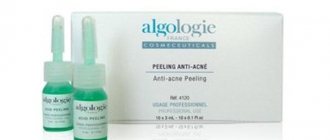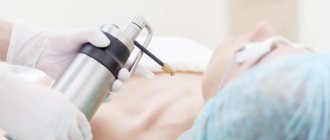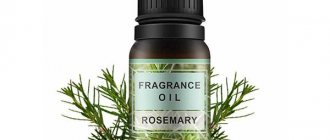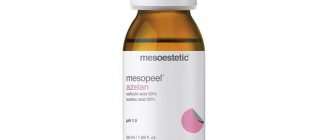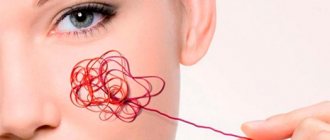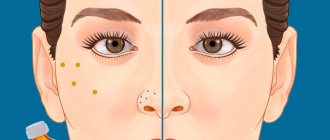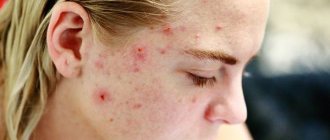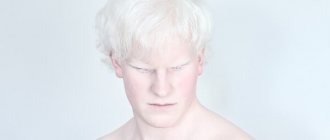Causes
Since the causes of rosacea can be external and internal, we will consider them separately.
Internal include:
- Rosacea.
- Hormonal surges. Spider veins often appear during menopause or pregnancy.
- Diseases associated with the thyroid gland, pancreas, ovaries.
- Some types of cardiovascular diseases, as well as gastrointestinal tract diseases.
- Selected autoimmune diseases.
As already mentioned, all of these factors are quite rare. Couperosis often appears for external reasons, which include:
- Regular exposure to UV rays.
- Bad habits. Alcohol and smoking have a strong effect on blood vessels.
- Improper skin care. If the blood vessels are weak and the skin is damaged by scrubs or aggressive acids, the symptoms of rosacea will intensify over time.
- An unbalanced diet, which contains a lot of spicy, too hot food, as well as chocolate products and coffee.
- Severe temperature changes when the skin is first exposed to heat and then to cold.
Often it is not possible to determine the specific cause of rosacea, because its first symptoms begin to appear at a young age - the patient simply does not remember what could have influenced it.
Etiology and pathogenesis of rosacea
The etiological factors of rosacea can be divided into endogenous and exogenous.
Endogenous factors include the influence of heredity. A decrease in the elasticity of the vascular wall is a genetically determined condition, which can be aggravated by various provoking (exogenous) factors - heat, cold, hormonal imbalance, somatic diseases, weakness of the valve apparatus of the veins of the lower extremities, etc.
Among the exogenous factors, it is worth highlighting the following:
- Nervous strain - in this case, large main vessels narrow, which increases the pressure in them, and the vessels of the peripheral network, on the contrary, expand.
- Smoking - promotes spasm and decreases the strength of the vascular wall.
- Diet - too hot, spicy or salty food, frequent and/or heavy consumption of alcoholic beverages provoke exacerbation and progression of rosacea.
- Climate - this includes ultraviolet radiation, prolonged exposure to strong gusty winds, cold or too hot and humid climate.
- Lifestyle - rosacea can worsen after visiting a sauna or bathhouse, with mechanical pressure on the skin (wearing tight synthetic clothing), while working with formaldehyde, etc.
Food triggers for rosacea are similar to those for rosacea. This includes hot tea and coffee, wine, strong alcohol, products with capsaicin (spices, hot sauces, hot and red peppers) and with cinnamaldehyde (tomatoes, chocolate, citrus fruits).
There is evidence that disruption of the microbial composition of the skin can provoke dysfunction of the epidermal barrier, which increases the skin's sensitivity to external factors and contributes to the development of rosacea.
Symptoms
Although this disease can affect any part of the skin, it most often manifests itself on the face - on the wings of the nose, cheeks and chin. This is due to the fact that in these areas the skin is thin and elastic.
This type of vascular network does not hurt, and there is rarely a feeling of itching or burning. It happens that after the appearance of such stars, the process slows down and stops - if you do not injure the skin and care for it properly, this does not cause any discomfort to the patient (or only aesthetic discomfort). But in some cases, the disease progresses and becomes more serious: the affected areas of the skin begin to turn blue, the skin or limbs (if rosacea is on the legs) swell, and inflammation begins.
Even if physically the symptoms of rosacea do not bother you, but it has appeared recently, you need to consult a dermatologist: if possible, find out the reasons for the deviation and understand whether there is any additional danger in it.
Diet for rosacea
Can
- Fermented milk products (cottage cheese, kefir, milk, low-fat sour cream, fermented baked milk);
- Lean meats (chicken, turkey, veal), preferably steamed or roasted
- Vegetables, especially all types of cabbage, zucchini, squash - preferably eaten raw or semi-raw
- Fruits (hypoallergenic)
- Berries (hypoallergenic, not too sour)
- Long-term carbohydrates (cereals: buckwheat, oats, barley).
- Vegetable oil (any in small quantities)
- Dried fruits (as dessert)
- Greenery
- Fish (low-fat types)
- Rye or whole grain bread
Must be excluded
- Fatty meats
- Spices
- Snacks (chips, crackers)
- Smoked products
- Pickles
- Light carbohydrates (cakes, pastries, buns, any other types of baked goods, sweets)
- Coffee and strong tea
- Canned foods
- Alcohol
- Fast food
Stages on the face, complications
It is customary to distinguish four stages of rosacea:
- 1st. As a rule, the vessels do not appear yet or there are only two or three of them - a person simply often experiences redness in the face or other parts of the body. After severe redness, the skin can sometimes dry out (more rarely, peel off).
- 2nd. The redness of the cheeks is more obvious (often when washing or touching), the vascular pattern is more active. Some patients have a tingling or burning sensation.
- 3rd. The redness in the affected areas does not disappear anywhere - it is constantly on the skin. Severe dryness of the skin is observed, and an inflammatory reaction may begin.
- 4th. All facial vessels are already involved in the process; there is a spasmodic effect, due to which certain areas of the skin become pale.
The health and life of the patient with this disease is not in danger. But it is important to understand that rosacea is the enemy of young skin. The aging process begins to develop more actively, the skin loses its attractive appearance. This has different levels of significance for patients of different ages. If the problem occurs in adulthood and old age, many simply adhere to the minimum recommendations of doctors and do not pay too much attention to it.
But rosacea in children and young people requires a more serious approach - such patients still have a whole life ahead, so the aesthetic aspect is also very important for them.
In addition, it is important to remember that in some cases this disease still indicates problems in the body that can be dangerous. And in order to avoid problems, it is necessary to get advice from specialists.
Laser coagulation method
The essence of the procedure is that the laser seals the walls of damaged vessels, which prevents the flow of blood into them, due to which the network of capillaries becomes completely invisible.
The advantages of the technique are its painlessness, the absence of any marks on the skin after the course of treatment. In addition, I note that this does not cause any harm to the entire circulatory system.
Sessions can be held both in winter and summer. The duration of one procedure is about forty minutes. The number of appointments with a cosmetologist in this case will depend on the degree of complexity of the disease. At the initial stage of rosacea, four sessions may be enough, but to get rid of advanced rosacea, it is best to spend at least seven.
It is important not to use any cosmetics during the treatment period; the effect of such therapy will be noticeable on the third or fourth day.
Diagnostics
To determine rosacea on the body, a dermatologist does not need much research. But it is important for patients to understand that they cannot do this on their own; it is necessary to differentiate this condition from others that may be more dangerous.
For diagnostics the following are used:
- Examination, history taking and dermatoscopy.
- General urine and blood tests, biochemical blood tests, as well as tests for certain types of hormones.
- Ultrasound of the thyroid gland and abdominal organs (optional).
If a specialist suspects hidden diseases, this list may expand.
Perioral dermatitis
Synonyms: rosacea-like dermatitis, flight attendant disease - rashes around the mouth: redness, swelling and papules.
Diagnostically difficult to distinguish disease of unknown etiology. Provoking factors : the use of steroids both locally and inhaled, fluoride-containing pastes, occlusive cosmetics.
The main diagnostic differences from rosacea: bright erythema and telangiectasia are rare. Localization: nasolabial folds, perioral region, chin, lower eyelids. Women aged 20-30 years and children are affected.
Distinctive feature : rapid regression of rashes, if a trigger factor is identified.
If visual diagnosis is difficult, a histological examination is recommended.
Treatment
If there is an underlying disease that has caused rosacea on the face or body, then treatment begins with its elimination. In this case, the patient is often accompanied not only by dermatologists, but also by endocrinologists, cardiologists, and gastroenterologists, depending on the disease underlying the problem.
When the disease is independent, in the first and second stages, doctors usually recommend proper skin care and monitoring your condition. The third or fourth stage already shows the treatment of rosacea by removing dilated vessels using one of several methods:
- Ozone therapy. It involves the introduction of a certain mixture into the lumen of a damaged vessel.
- Laser therapy. A laser beam is used to narrow blood vessels (the best option is a neodymium laser).
- Phototherapy. When using it, blood vessels are restored using photo flashes.
- Electrocoagulation is essentially cauterization of blood vessels with electric current.
If there are no additional diseases, this problem can be solved quite effectively on an aesthetic level. For detailed advice, we recommend contacting the dermatologists of Meditsina JSC in Moscow - the clinic’s doctors will help patients at any stage of the disease.
Prevention
To avoid having to carry out complex treatment of rosacea on the face, you must adhere to the following measures:
- Give up bad habits, switch to proper nutrition.
- The right way of life. Healthy sleep, moderate physical activity, avoiding stress - all this is very important.
- Proper skin care. It is best to consult a cosmetologist who will select care taking into account your characteristics.
- Regular skin protection from the sun. There is no need to be outside during periods of particularly sunny activity (from twelve in the afternoon to five in the evening), and it is also important to always use sunscreen.
- Protecting the skin from hypothermia - there are also special nourishing creams for winter.
Since the problem is related to the quality of the walls of blood vessels, a very important factor is proper nutrition. Once every year or two, for this reason, you need to visit a nutritionist-endocrinologist, take tests for missing substances and take a course of vitamins, and also adjust the menu in accordance with the doctor’s recommendations.
Seborrheic dermatitis
Seborrheic dermatitis is a chronic inflammatory disease associated with a violation of the amount and composition of sebum and a disturbance of the skin microbiota.
Clinical manifestations : hyperkeratosis, peeling, seborrhea, inflammation and itching.
Localization : areas with the largest number of sebaceous glands, including the T-zone of the face, as well as the scalp, upper third of the back and chest area, ears.
The common feature is centrofascial erythema, the distinctive features are: with rosacea – papules and telangiectasia, with seborrheic dermatitis – the formation of scales and peeling, which are not characteristic of rosacea.
